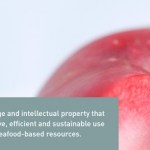food
It's been not even a month since the last paper looking at MRSA in meat, and up pops another one. So far here in the US, we've seen studies in Rhode Island (no MRSA found); Louisiana (MRSA found in beef and pork, but "human" types: USA100 and USA300); the recent Waters et al study sampling in California, Florida, Illinois, Washington DC, and Arizona, finding similar strains (ST8 and ST5, associated with USA300 and USA100, respectively). Now a new study has collected MRSA samples in Detroit, collecting 289 samples from 30 retail stores in the city.
For this study, they collected only beef,…
What better way for a bunch of science geeks to celebrate a birthday than by having a science party? We spent a lot of time making delicious science-themed snacks, and I have to say, they came out pretty good!
Bacterial jello plates. They looked a bit too relastic, the cell biologists wouldn't touch them.
More plates, this time made with rice pudding. Tastier than jello, but less popular due to looks.
DIY electrophoresis jello. The red dye didn't migrate, but the yellow colouring of the jello did!
Obligatory placebo gag.
The text reads sample:alcohol 1:2. It didn't lie.
Señor…
Today we took the children to Table Mountain, a volcanic mesa in northern California.
It is a special place, preserved from development by the dense, rocky texture of the soil- no good for farming. We strolled through carpets of flowers Lasthenia californica (California goldfields). Blemnosperma nanum (yellow carpet), Lupinus nanus, Triteleia ixiodies (pretty face), Castilleja exserta (purple owls clover), Triphysaria eriantha (Jonnytuck or Butter 'n' eggs), Eschscholzia caespitosa, (foothill poppy), popcorn flower and gaze at the box kites flying overhead. The blue, grey and white match the…
As Maryn McKenna and others have reported, a paper was released on Friday showing a high percentage of drug-resistant Staphylococcus aureus contaminating raw, retail-available meat products. There has been a lot of media coverage of this finding--so what does the study say, and what are its implications? More after the jump.
First, a bit about S. aureus itself, and why this study was carried out. Historically, Staph has been a relatively common cause of food poisoning. The bacterium produces toxins that can collect to a high level when prepared foods are left at room temperature, such as…
Today is World Health Day, and the World Health Organization is using the occasion to draw attention to a serious global health problem: the rapid spread of bacteria resistant to antibiotics. The development and widespread use of antibiotics counts as a public health triumph, as infections that once routinely killed large numbers of people became much easier to treat. That triumph can be undone, though. WHO Director-General Margaret Chan warns, "In the absence of urgent corrective and protective actions, the world is heading towards a post-antibiotic era, in which many common infections will…
I walked into the gleaming 'Orchard in a box", a closed greenhouse where no pollen can flow outside. The apple was red, red, red inside and out and I wanted it. But because I was in New Zealand, where experimenting with genetically engineered food is highly regulated, tasting was banned.
How was this forbidden fruit created? By overexpression of an apple transcription factor in the white-fleshed, tasty Royal Gala variety. The transcription factor was isolated from an apple that has both red flesh and red skin, that occurs in Central Asia. However, these apples are normally quite bitter…
New York Times columnist Mark Bittman (famous for his writing on food) reported on Tuesday that he was joining more than 4,000 others who've been fasting to call attention to House legislation's proposed cuts to programs for the poor and hungry. He explains:
[The poor] are -- once again -- under attack, this time in the House budget bill, H.R. 1. The budget proposes cuts in the WIC program (which supports women, infants and children), in international food and health aid (18 million people would be immediately cut off from a much-needed food stream, and 4 million would lose access to malaria…
I am less enthralled by the "molecular gastronomy" thing than someone with my geek credentials ought to be. As a result, I was a little disappointed when I clicked the link (from Jennifer Ouellette on Twitter) to this Wired story about a new tv show called Marcel's Quantum Kitchen. Because, you know, there are much more fun things that the combination of "Quantum" and "Kitchen" could evoke:
A kitchen whose dishes all come in discrete and indivisible portions. You can't eat half and take the other half home-- it's all or nothing...
You can either know what you're making, or how long it will…
Earlier this week, the UN Special Rapporteur on the right to food released a report stating that agroecology - basically, sustainable agriculture - can double global food production over the next decade. Specifically, agroecology can raise production in the poor, food-deficit countries that most need additional crops. The techniques, which include using plants and beneficial animals in place of chemical pesticides and fertilizers, can be easily adopted by smallholder farmers. And these farmers' additional earnings will in turn support local sellers and service providers, who don't tend to…
In January of 2007, Aaron Newton, my friend and co-author of A Nation of Farmers came to Albany for four days of intense work on our book. We barely ate, slept or left the house, since we knew it would be the only chance the two of us had to hash everything out. Perhaps the single most intense moment for me, at least, was the conversation Aaron and I had about the central chapter of the book - the one that answered the question "Can we actually feed the 9+ billion people expected to live on this planet without lots of fossil fueled inputs?" This was the question answered by Tuesday's…
It's a little bigger than an iPhone. A while back, I came across this Wall Street Journal article about the Computer Museum. I found this handy-dandy computer to help housewives cook a delicious meal! It's very practical:
(from here)
Sure, it takes up half the kitchen, but look at what the Neiman-Marcus catalog of 1969 says about it:
"The mini-computer was specially programmed to select meals fit for royalty. It appeared in the Neiman-Marcus Christmas catalog in 1969."
Fit for royality! See how useful it is:
It does put smart phones in perspective....
We're hearing a lot of rhetoric about the need to slash government spending, so it's a good time to remind everyone that there's no such thing as a free lunch - and if you think you're getting a free lunch, it might be loaded with pathogens.
Maryn McKenna, writing at Superbug about a New England Journal of Medicine study, has an illustrative example: the Great Tomato Scare of 2008. Between May and August of 2008, 1,499 people (and probably many more) fell ill from the Saintpaul strain of Salmonella, and two people died. The Food and Drug Administration initially thought tomatoes were to…
I once wrote about a miniature køkkenmødding shell midden that accreted in our kitchen sink when we had oysters (image below). Another type of archaeological assemblage that occurs far more commonly in our house is the chicken or pork bone dump. The chicken bones usually don't look very archaeological when we throw them out since they tend to be discoloured and still partly covered in soft tissue. But as you can see above, what remains after my wife has cooked pork broth on fläskben, cheap bony butchering leftovers, could be sitting in a tagged zip baggie on any urban dig.
Our boiled pork…
I had a great conversation with Maggie Koerth-Baker from BoingBoing for bloggingheads.tv Science Saturday. We talked about all sorts of sciency stuff, including her upcoming book on the challenges of renewable energy, synthetic biology, the similarities between cheese and the human body, women in science/blogging, and octopus brains. I had a lot of fun chatting with Maggie and I learned a lot, and I hope you will too!
Last week, Mark Bittman published the New York Times column "A Food Manifesto for the Future," in which he proposed ways to "make the growing, preparation and consumption of food healthier, saner, more productive, less damaging and more enduring." Among his suggestions was outlawing concentrated animal feeding operations, so it wasn't surprising to see a letter to the editor from Randy Spronk, Chairman of the Environment Committee of the National Pork Producers Council in the Times a few days later (hat tip to Maryn McKenna's Twitter feed). It's interesting to see how Spronk responded to…
Unless a shortage is defined by a 0.1% decrease. Paul Krugman, with whom I often agree, has been crying hither and yon that rising food prices are a result of food shortages and not market speculation. This hasn't made much sense to me. First of all, we saw similar spikes in agriculture futures prices in 2006 that were clearly the result of financial speculation. First of all, as Alice Cook notes, we're producing historical high levels of wheat:
Curse those stupid fucking natural history facts! But there is a predicted decrease in supply of about five percent. Cook argues that this…
Recipe of the week: Turnip Blue Cheese Gratin
Raoul has lots of turnips and rutabagas at the farm.
This recipe was provided by our friends Sue and Buck at a recent bring-your-best-dish-ever potluck. It was delicious. The chef used rutabagas instead of turnips, but feel free to use either or mix and match.
Ingredients
2 cloves garlic, smashed
salt and pepper to taste
3/4 cup half-and-half cream
5 sprigs fresh thyme
1 bay leaf
2 large leeks - cleaned, and cut into 1/4 inch thick rounds
2 large turnips (or rutabagas), peeled and sliced
1 cup cubed butternut squash (optional)
4 large mushrooms…
The Harvard Microbial Sciences Initiative Graduate Consortium hosted a fun workshop during the January term where students learned about microscopy by taking some amazing pictures of food microbes. The images taken with the scanning electron microscope of sauerkraut, kombucha, and some stinky cheeses show beautiful and complex landscapes made by and of microbes.
Sauerkraut is fermented by cute rod-shaped lactic acid bacteria:
Kombucha, a tea fermented by a combination of yeasts and bacteria, looks incredible under the microscope, where you can see the dense mesh of cellulose fibers that the…
Some villages in Pakistan's Sindh province are still underwater following August's floods, and a new UNICEF survey has found that nearly one-fourth of the children under five there are malnourished. The deputy head of UNICEF Pakistan, Karen Allen, calls conditions "shockingly bad" and compares them to "the worst of the famine in Ethiopia, Darfur, and Chad." The Guardian's Declan Walsh notes that other parts of the country are successfully recovering from the floods (the number of people in camps and roadside settlements has dropped from 3.3 million in October to 166,000), but Sindh "has long…

